BUTEA
Butea
Konig ex Roxb., Pl. corom. 1: 22. t. 21. 1795; Baker in Hook. f., Fl. Brit. Ind. 2: 194. 1876; Cook, Fl. Bomb. Pres. 1: 395. 1958; Talbot, For. Fl. Bomb. Pres. and Sind, 409. 1911; Fl. Pak. @ eFloras.org p. 236; Chen et al., Fl. China @ eFloras.org 10: 222.
Deciduous trees, climbing to erect shrubs, or perennial herbs, tomentose. Leaves pinnately 3-foliolate; stipules small to medium sized, caducous. Flowers bisexual, zygomorphic, 5-merous, perigynous, large, orange-red or red, densely clustered in axillary or terminal racemes or panicles; bracts and bracteoles small, caducous. Calyx broadly campanulate; teeth short, obtusely triangular, upper 2 connate into a broad entire or emarginate lip. Corolla medium sized to large, exserted; petals subequal in size; vexillum ovate or lanceolate, apex acute, recurved, not appendaged; wings falcate, adherent to keel; keel longest, incurved, apex acute, back connate into a ridge. Stamens 10, diadelphous (9+1), vexillary stamen free; anthers uniform. Monocarpellary, ovary sessile or shortly stipitate, 2-ovuled, placentation marginal; style elongated, incurved, glabrous; stigma small, terminal. Legumes oblong, compressed, apex rounded, with 1 seed at top, empty and not dehiscent in lower part, often with stipe at base. Seed obovate; hilum small, estrophiolate.
5 species
Butea monosperma
Butea monosperma
Taub. in Engl. & Prantl., Nat. Pflanzenfam. 3(3): 366. 1894; Fl. Pak. @ eFloras.org p. 237; Fl. China @ eFloras.org 10: 222. Erythrina monosperma Lam., Encycl. 1(2): 391. 1785; Butea frondosa Roxb. ex Willd. Sp. Pl. ed.4. 3(2): 917. 1802; Parker, For. Fl. Punj. ed. 1: 159. 1918 (Reprint 1973).
Small to medium-sized, 10-20 m tall deciduous tree with crooked trunk and large irregular branches, bark light brown or greyish black, young branches tomentose. Leaves alternate, pinnately trifoliate; petiole 10-22.5 cm long, swollen at base, stipules small, linear-lanceolate, deciduous; terminal leaflet 12.5-20 cm x 11-18 cm, broadly obovate, base cuneate or rhomboid, apex obtuse, emarginate; lateral leaflets obliquely ovate, obtuse, slightly smaller (11.5-16 x 8.5-10 cm) than the terminal leaflet; all coriaceous, glabrescent above, finely silky beneath; lateral veins 6-7 pairs, reticulate veins distinct; petiolules 5-7.5 mm long, stout; stipels small, subulate, deciduous. Inflorescence axillary or terminal rigid raceme or panicles, 10-17.5 cm long; flowers bisexual, zygomorphic, 5-merous, perigynous, large, showy, orange-red or red, densely clustered, appearing when tree is nearly leafless. Pedicels 1.5-2.5 cm long; bracts and bracteoles small, deciduous; rachis, pedicels, bracts, bracteoles and calyx outside dark brown velvety. Calyx 5, ca. 1.2 cm long, broadly campanulate, grey-silky inside, teeth short and deltoid, two upper connate. Corolla 5, papilionaceous, bright red tinged with orange, silky, silvery pubescent outside, vexillum ovate, acute, 3.7-5.0 cm long, 2.5 cm broad, recurved; wings falcate, adhering to keel; keel much curved, beaked, equalling the vexillum. Stamens 10, diadelphous (9+1), vexillary stamen free, anthers uniform. Ovary shortly stipitate, unilocular with 2 ovules, placentation marginal; style elongate, incurved, beardless; stigma terminal, minute. Legumes 10-20 cm x 2.5-5 cm, thin flat, grey-silky, reticulate, sutures thickened, with one seed at the apex, narrowed abruptly at the base into a stalk 1.2-1.8 cm long, dehiscent round the seed, indehiscent below.
Common Names: Flame of the forest, Bastard Teak, Bengal Kino; Dhak, Chichera, Palah, Palas (Hindi)
.jpg)
.jpg)
.jpg)
-DSC01729.jpg)
-DSC01731.jpg)
-DSC01737.jpg)
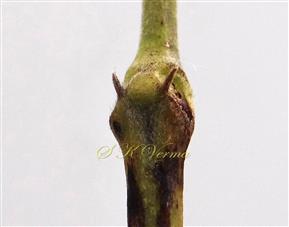
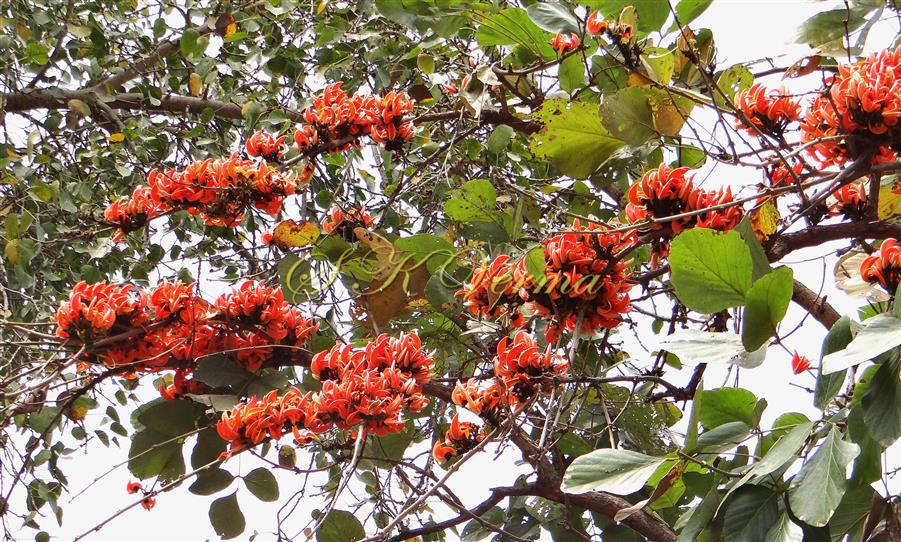
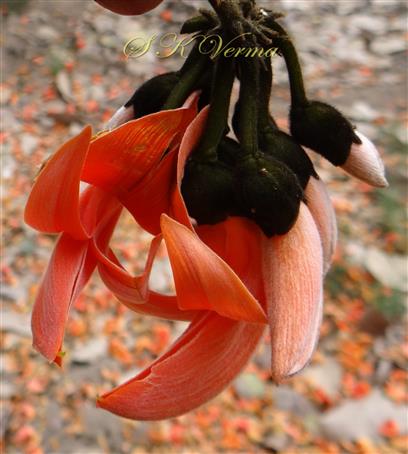
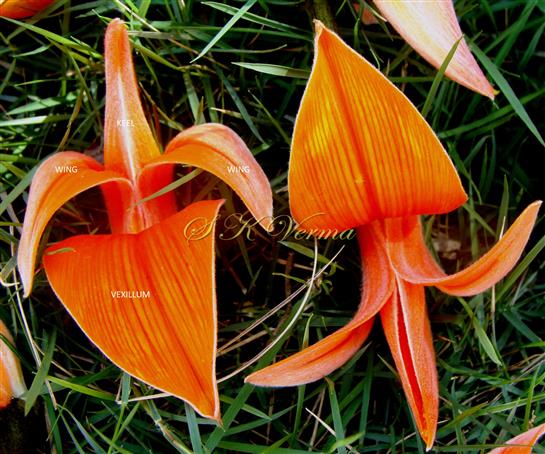
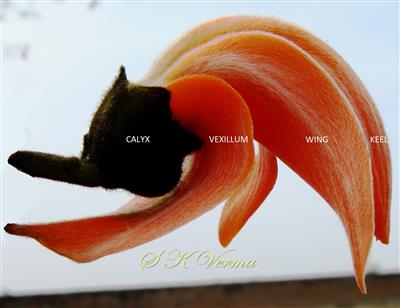
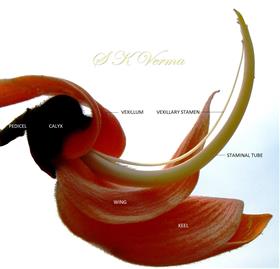
.jpg)
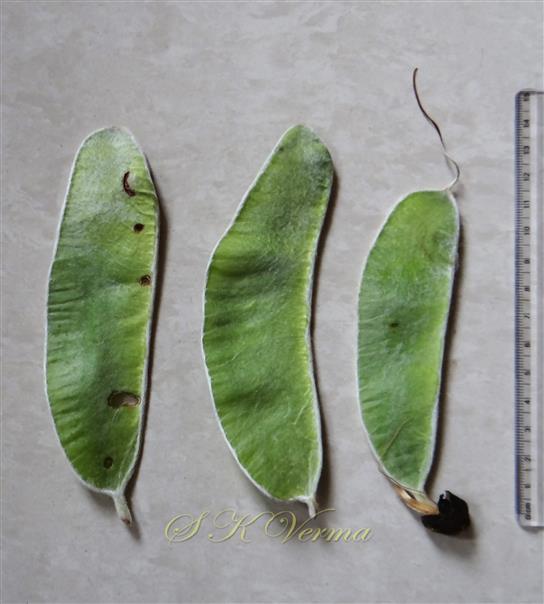
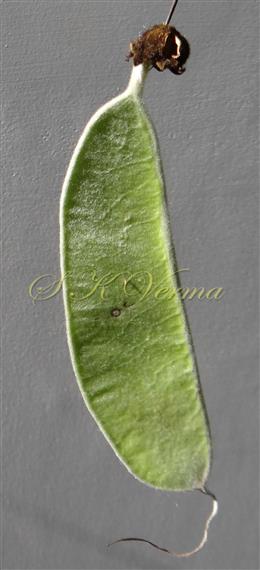
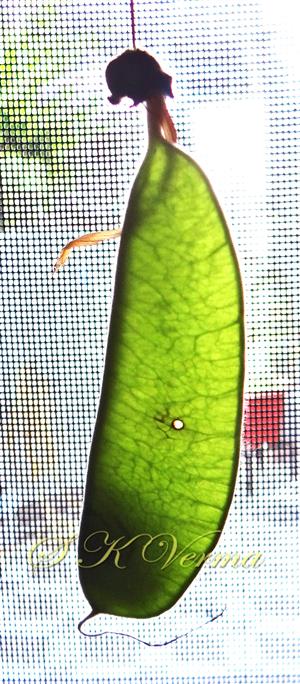
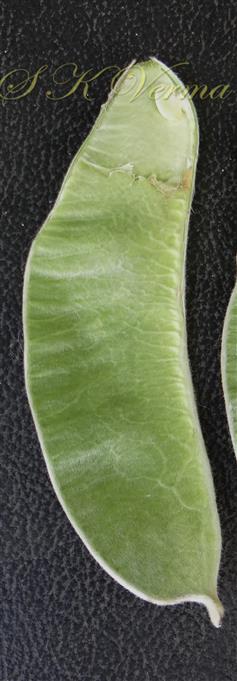
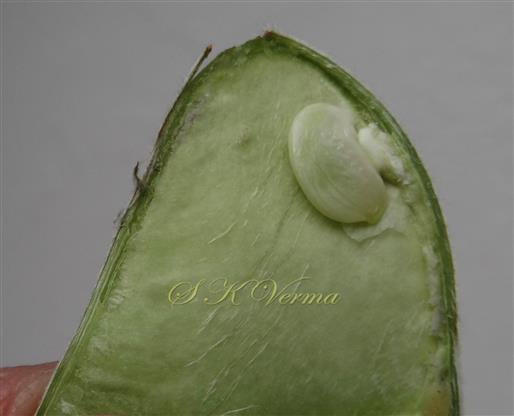


.jpg)
.jpg)
.jpg)
-DSC01729.jpg)
-DSC01731.jpg)
-DSC01737.jpg)






.jpg)





